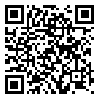Volume 10, Issue 3 (6-2021)
JCP 2021, 10(3): 535-545 |
Back to browse issues page
Download citation:
BibTeX | RIS | EndNote | Medlars | ProCite | Reference Manager | RefWorks
Send citation to:



BibTeX | RIS | EndNote | Medlars | ProCite | Reference Manager | RefWorks
Send citation to:
Saeidi Z. Resistance of different almond cultivars/genotypes to almond fruit wasp, Eurytoma amygdali (Hymenoptera: Eurytomidae). JCP 2021; 10 (3) :535-545
URL: http://jcp.modares.ac.ir/article-3-49373-en.html
URL: http://jcp.modares.ac.ir/article-3-49373-en.html
Department of Plant Protection, Agricultural and Natural Resources Research and Education Center, Chaharmahal and Bakhtiari, AREEO, Shahrekord, Iran. , zarirsaeidi@yahoo.com
Abstract: (2522 Views)
Resistance of eight almond genotypes/cultivars, including Sefid, Mamaei, Rabie, Shahrood7, Ferragnes, Shahrood13, Nonpareil, and Hooreh, to almond fruit wasp (AFW) Eurytoma amygdali Enderlein, was investigated using choice and no-choice tests. The infested fruits ranged from 4.60 ± 1.45% in the Hooreh genotype to 86.87 ± 2.01% in the Ferragnes cultivar in the choice test. The highest and lowest premature dropped fruits were recorded in Ferragnes (80.70 ± 3.21%) and Hooreh genotype (2.43 ± 1.12%), respectively. The highest and lowest numbers of alive larvae were observed in Nonpareil (1.27 ± 0.70 larvae/fruit) and Ferragnes cultivar (0.04 ± 0.02 larvae/fruit). The No-choice test indicated the highest premature dropped fruits (79.21 ± 3.76%) and the lowest number of alive larvae (0.09 ± 0.03 larvae/fruit) in the Ferragnes cultivar. The olfactory response revealed that E. amygdali females were strongly attracted to fruits and fruit extracts of Mamaei and Ferragnes cultivars compared to the Hooreh genotype. Our finding demonstrated that certain chemical stimuli emitted from the unripe fruits of almond might influence the host finding behavior of AFW females.
Article Type: Original Research |
Subject:
Insect Physiology
Received: 2021/01/21 | Accepted: 2021/06/6 | Published: 2021/08/9
Received: 2021/01/21 | Accepted: 2021/06/6 | Published: 2021/08/9
Send email to the article author
| Rights and permissions | |
 |
This work is licensed under a Creative Commons Attribution-NonCommercial 4.0 International License. |








